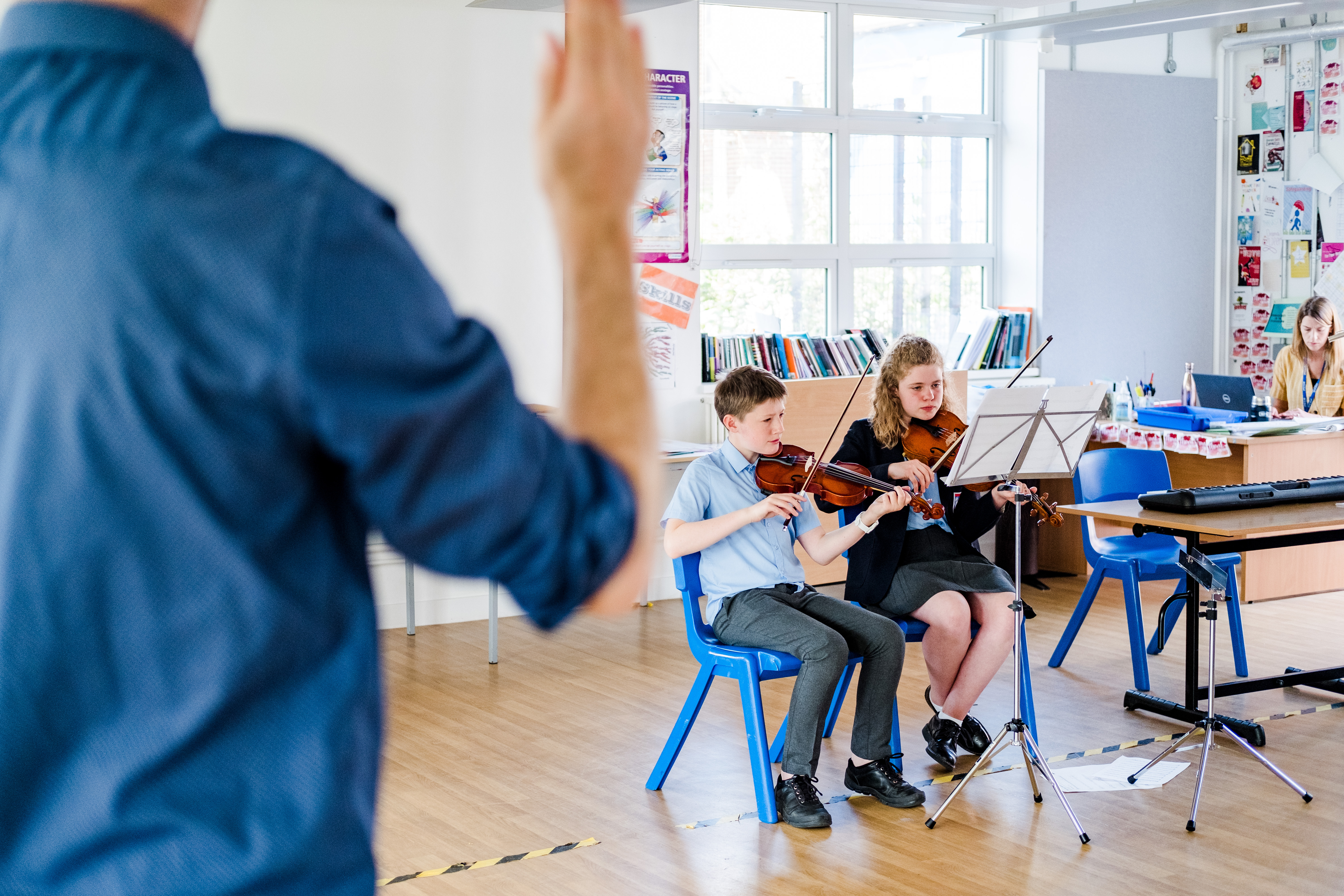Intent (based on the National Curriculum)
-
-
Students should perform, listen to and evaluate music across a range of historical periods, genres, styles and traditions including the works of great composers and musicians. They should learn to sing and to use their voices, to create and compose music on their own and with others, have the opportunity to learn a musical instrument and to use technology appropriately. Students should understand and explore how music is created, produced and communicated including through the inter-related dimensions: pitch, dynamics, tempo, timbre, texture, structure and appropriate musical notations.
Implementation
Students will be taught to:
- play and perform confidently in a range of solo and ensemble contexts using their voice, playing instruments musically, fluently and with accuracy and expression
- improvise and compose; and extend and develop musical ideas by drawing on a range of musical structures, styles, genres and traditions
- use staff and other relevant notations appropriately and accurately in a range of musical styles, genres and traditions
- identify and use the inter-related dimensions of music expressively and with increasing sophistication, including use of tonalities, different types of scales and other musical devices
- listen with increasing discrimination to a wide range of music from great composers and musicians
- develop a deepening understanding of the music that they perform and to which they listen, and its history
Key concepts
- Performing
- Composing
- Listening
- Appraising
- Understanding
Links to Key Stage 2
We note that there are huge differences in student’s Key Stage 2 curriculum diet. However, students at Key Stage 2 are generally taught to use their voices and play musically. The Key Stage 3 RET Music curriculum extends these skills to encompass performance skills in voice and instruments by developing and developing technical and performance skills and in an understanding of the music. Pitch, duration, dynamics, tempo, timbre, texture, structure and appropriate musical notations are considered at Key Stage 2. The RET Key Stage 3 curriculum builds on this by extending creative composing and more in depth, regular creating and composing. Our aim is to develop a culture and foster a love for music.
Relationship to the wider Key Stage 3 Curriculum
There are extensive links with Drama, English and History departments. Our schools engage in cross curricular projects to contextualise music; to present and perform to audiences. In some of our schools there are links to geography and technology as students create instruments and study music and geographical movement from other cultures at Key Stage 3. There are links to dance in delivering performance, to art in terms of the similarity of vocabulary and to ICT as students begin to use tailor made computer programs to create music.
Links to KS4
All of the skills practiced at KS3, are represented, assessed and developed in Key Stage 4. KS3 is a natural progression. Where option numbers and staffing permits, students can choose between a traditional GCSE path and a vocational RSL path. This is also dependent upon their musical background (whether they partake in music lessons e.g. peripatetic outside lessons).
Extra Curricular Experience
Irrespective of background we encourage all students to take part in our extra curricular music offer. This includes peripatetic lessons and groups that meet before and after school and during lunch times. Examples of our offer include:
BFS: Dynamics Choir, Treble Bass Jazz Band
BKS: Stage band, Orchestra and Choir
STA: St. Andrew’s choir, orchestra, Byzantine choir
KSH: Orchestra, King’s School Choir, Stage Band
THS: Chamber Group, Orchestra, Harmony Groups
These demonstrate differentiation across the Trust dependent on student interest, ability and local cultural links.
-

